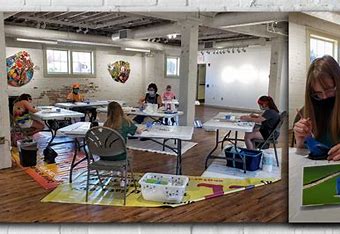
By JP
It’s an extremely stressful period right now. There are many group projects and tests that require full cognitive capacity, but neurodivergent pupils find it more difficult because of finals. A neurodivergent student can successfully manage their home, and college lives by stressing holistic solutions that respect their unique requirements for self-care needs. It’s good to set up structured timetables that strike a balance between personal objectives, education, and recreation. Having interests or hobbies outside of school, setting realistic goals, and refraining from forcing oneself to conform to neurotypical norms are all helpful strategies. Lady J. Rios-Vega, a research associate at Thomas Jefferson University’s Autism Center of Excellence and adjunct faculty member in the Department of Occupational Therapy, offered this guidance for neurodivergent students. This interview has been edited for length and clarity.
What common stressors do you observe in college students, particularly those on the autism spectrum, due to sensory needs?
Dr. Rios Vega: There’s a lot of overstimulation, which happens when there’s too much external stimuli, or when that stimuli isn’t processed effectively. This can be especially challenging for neurodiverse individuals, including autistic individuals, as well as those with ADHD, sensory processing disorders, anxiety, PTSD, and other neurodevelopmental conditions.
For autistic individuals, sensory overstimulation is particularly common, with about 97% affected. Sensory overload can involve various stimuli from our eight senses—not just the five we usually hear about. In addition to sight, sound, touch, taste, and smell, there’s proprioception (which helps you know where your body is in space), the vestibular system (related to balance, located in the inner ear), and interoception (which helps you perceive internal sensations like pain or discomfort).
Sensory overstimulation can lead to emotional and intellectual overstimulation. College students face academic demands, deadlines, exams, and sometimes family expectations, especially around the holidays. The college environment can be overwhelming, with physical, intellectual, and social factors all contributing to overstimulation.
How can colleges, professors, or peers help with overstimulation or stress, especially around this time of year?
Dr. Rios Vega: There are many ways colleges can support students. One is adapting spaces to be sensory-friendly. This could involve creating sensory-adaptive areas with diverse stimuli so students can take breaks and regulate themselves.
Other adaptations could include adjustable lighting in classrooms and dorms, and ensuring quiet spaces are available. For professors, adapting lectures or materials so they aren’t too loud or bright can help. Simple things, like offering headphones for individual sound control, can make a big difference.
Additionally, creating events with adaptations for neurodiverse students—such as avoiding unnecessary lighting and noise and offering quiet spaces for breaks—can foster inclusivity. Tactile items can also be helpful for students to manage stress during college events.
What role does self-advocacy play in stress management, and how can students develop those skills?
Dr. Rios Vega: Self-advocacy is key. It involves recognizing one’s own needs and learning to communicate those needs effectively. Many colleges offer support services, and it’s helpful for students to seek them out. Working with an occupational therapist can also provide strategies tailored to individual sensory needs.
Self-advocacy skills include understanding personal strengths, identifying support systems, and finding ways to communicate effectively—whether verbally, through email, or by using other devices.
What resources and tools would you recommend for college students to help manage stress off campus, or within their communities?
Dr. Rios Vega: There are many resources, and availability depends on location. In Pennsylvania, for example, there is the Art Coalition, which offers artistic programs led by autistic individuals in sensory-friendly spaces.
Our Jefferson Autism Center of Excellence also provides resources on self-regulation and mindfulness, and I’d be happy to share those. Local community organizations often have options as well, and students might collaborate with allies or coaches to explore options they would enjoy.





